Halloween, with its costumes, candy, and spooky stories, is a widely celebrated holiday in many parts of the world. However, it’s not the only occasion where people engage in eerie, entertaining, or even solemn traditions. From honoring the deceased to chasing away malevolent spirits, numerous countries have their unique celebrations that parallel or complement the spirit of Halloween. In this blog, we’ll embark on a journey to discover 14 Halloween-like traditions from around the world by country, delving into the diverse customs that resonate with the universal themes of the season while showcasing each culture’s distinct charm.
The List of the 14 Halloween Traditions from Around the World
1. Día de Los Muertos
Mexico
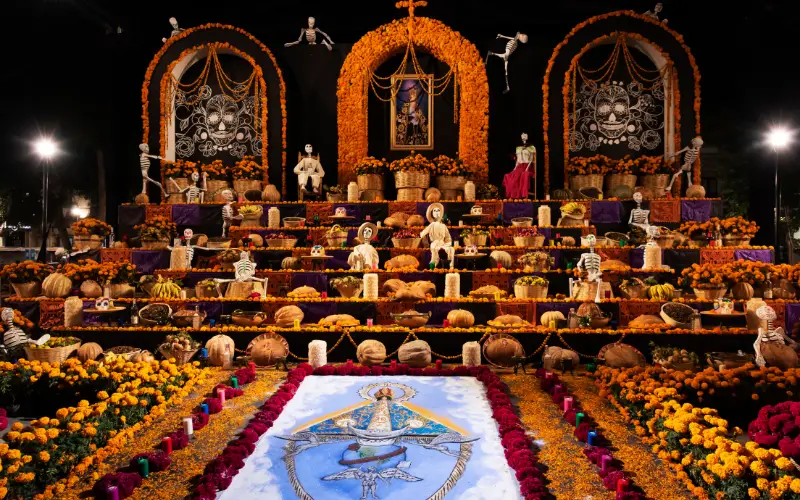
Día de los Muertos, or the Day of the Dead, is a significant Mexican holiday celebrated on November 1st and 2nd. Families gather to honor their deceased loved ones through various traditions. These include crafting ofrendas (altars) filled with marigolds, candles, sugar skulls, and the deceased’s favorite foods. Elaborate sugar skulls and figurines called “calacas” are used for decorations. The vibrant marigold flower guides spirits to ofrendas. Families visit cemeteries to clean and decorate graves, and pan de muerto, a special sweet bread, is baked and shared. Candles and incense illuminate the path for spirits. Some regions host lively processions, and art and craft activities prepare for the celebration. It’s a unique blend of indigenous beliefs and Catholicism, symbolizing a joyful connection between the living and the deceased.
2. Hungry Ghost Festival
China
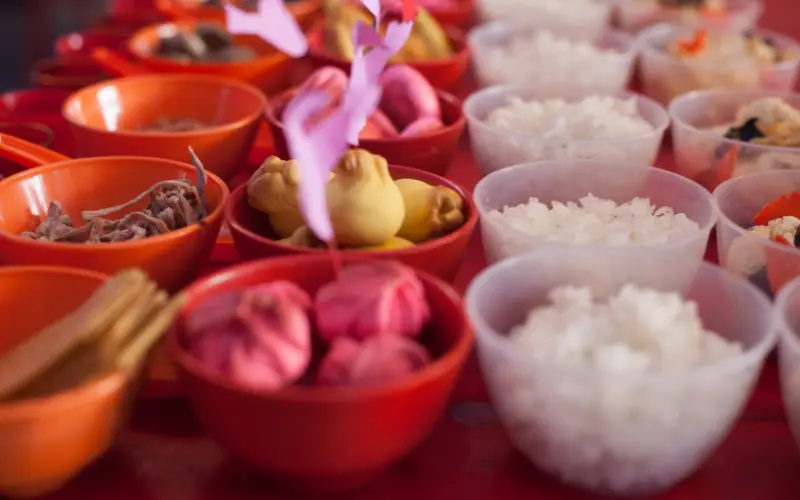
The Hungry Ghost Festival, known as Yu Lan Jie, is a traditional Chinese celebration observed in various East Asian countries. It typically occurs on the 15th day of the seventh lunar month, often in August. The festival centers on the belief that during this time, the gates to the afterlife open, allowing the spirits of the deceased to visit the living. Customs and rituals include honoring ancestors through offerings at home altars or graves, burning ghost money for prosperity in the afterlife, preparing feasts for spirits, enjoying traditional performances, releasing lanterns and boats to guide spirits, hosting lantern displays and parades, and performing acts of charity. This festival blends Taoist and Buddhist traditions, emphasizing respect for ancestors and the afterlife, offering a meaningful time for families to unite and ensure the well-being of their departed loved ones.
3. Halloween
Japan
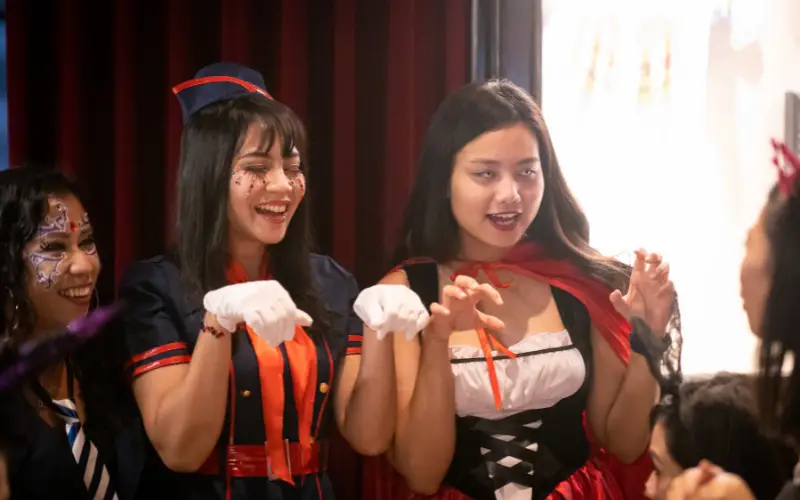
Halloween in Japan, known as “Harowin” or “Kasou” (meaning costume), has gained popularity in recent years, despite not being a traditional Japanese holiday. The celebration involves various elements such as dressing up in creative costumes, Halloween-themed parties with contests and special foods, limited trick-or-treating, decorations like pumpkins and skeletons, spooky haunted houses, cultural events introducing the concept of Halloween, jack-o’-lantern carving, themed treats, retail promotions, and a vibrant nightlife scene, especially popular among young adults. Although not part of Japan’s traditional culture, Halloween in Japan is marked by costume creativity and lively festivities.
Read More Fun Facts
Learn more fun facts with Trivia Mastermind content.
4. Dzień Zaduszny
Poland
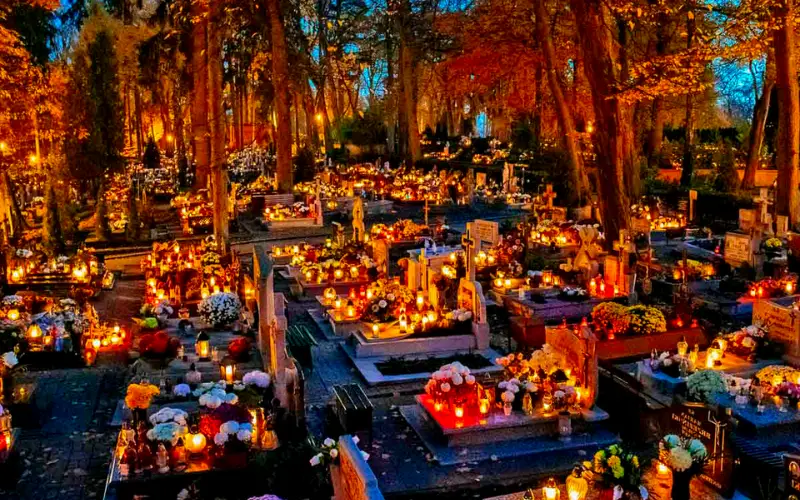
Dzień Zaduszny, observed on November 1st and 2nd in Poland, is a solemn occasion for honoring deceased loved ones. Families visit cemeteries to decorate graves with candles, flowers, and wreaths, while offering prayers for the souls of the departed. Candles are central to this commemoration, symbolizing guidance for the souls’ journey. Special church services and family gatherings promote reflection and remembrance. Traditional foods like “bigos” and “kutia” are shared. Some regions have unique customs, such as placing hay on graves. With roots in Christian and pagan traditions, Dzień Zaduszny underscores the significance of family and tradition in Polish culture, creating a serene and culturally rich atmosphere in beautifully candlelit cemeteries.
5. Gai Jatra
Nepal
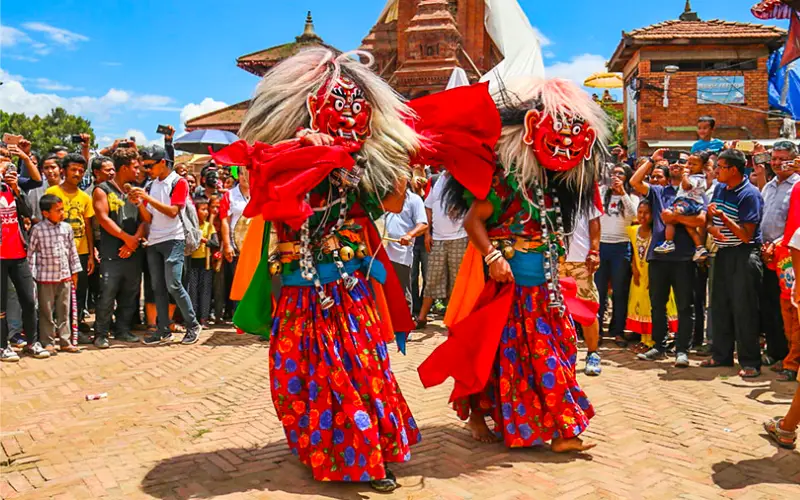
Gai Jatra, the “Cow Festival” celebrated in Nepal’s Kathmandu Valley, is a vivid and distinctive event marked by a range of customs and traditions. Central to the festival is the sacred status of cows in Hindu culture, with families who’ve lost loved ones in the past year leading decorated cows through the streets or employing cow-dressed children or young people when cows aren’t available. The festival serves as a poignant remembrance of the departed, combined with a unique facet of humor and satire, as people don colorful, often whimsical costumes and perform playful skits, playfully addressing social and political issues. Traditional masked dances, street decorations, social commentary, and a message of tolerance and acceptance of death collectively create a culturally rich and emotionally diverse celebration.
6. Pangangaluluwâ
Philippines
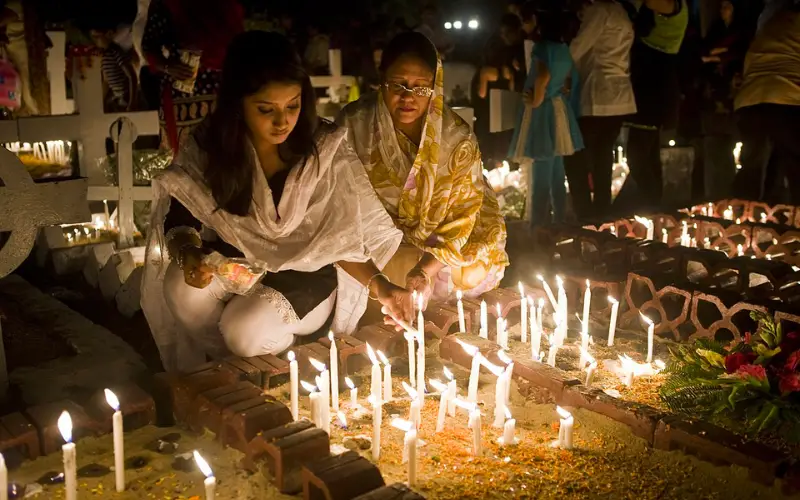
Pangangaluluwâ, celebrated on November 1st and 2nd in the Philippines, coinciding with All Saints’ Day and All Souls’ Day, is a tradition that includes cemetery visits to honor deceased loved ones with cleaned and adorned graves. Families bring favorite foods to the gravesite as offerings and engage in processions, often featuring angelic costumes, to signify souls’ journeys. Religious services, such as Masses, are held to pray for the departed, and there’s a belief that souls may require essentials, which are offered in some regions. Blending indigenous Filipino beliefs with Catholic traditions, this custom highlights respect for the deceased and provides a time for family gatherings and cultural remembrance.
Play Trivia!
Challenge yourself and play trivia questions with answers and explanations.
7. Samhain
Ireland
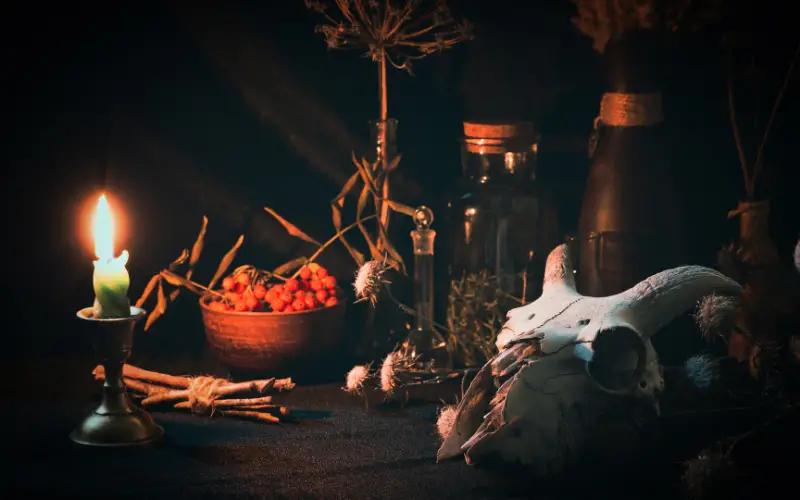
Halloween, or Samhain, in Ireland is a culturally rich celebration with deep-rooted traditions. Its is celebrated in the evening of October 31st to Wednesday Nov 1st. The feestivities involve lighting bonfires, wearing costumes, and playing apple-related games. Disguises and house decorations, often featuring carved turnips or pumpkins, are central to warding off evil spirits. A “Púca Parade” and a silent “dumb supper” are part of the celebration. The customs represent a fusion of Celtic and Christian traditions, making Samhain in Ireland a vibrant and historically significant celebration that encompasses both ancient and modern Halloween practices.
8. Chuseok
Korea
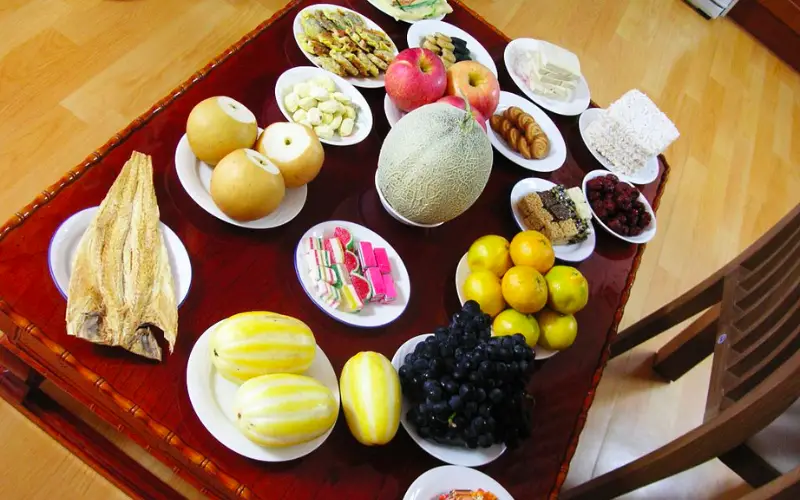
Chuseok, a major harvest festival in Korea, is celebrated with several customs and traditions. The celebration usually takes place on the 15th day of the 8th month of the lunar calendar. The key elements of Chuseok include ancestral rituals, family gatherings, and expressions of gratitude. Families visit ancestral graves to pay their respects and hold memorial services. Traditional Korean foods, such as songpyeon (rice cakes), are prepared and shared among family members. Folk games, dances, and performances often take place. Chuseok is a time for expressing gratitude for the harvest and strengthening family bonds. It’s a significant and culturally rich holiday in Korea.
9. Guy Fawkes Day
England
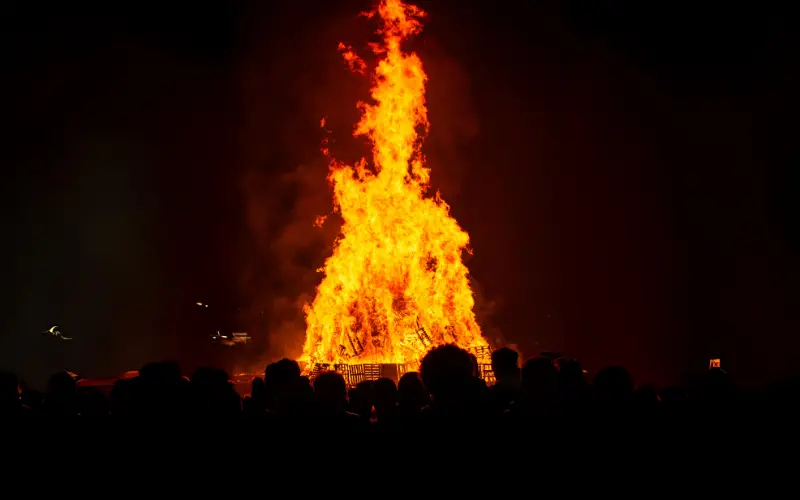
Guy Fawkes Day, also known as Bonfire Night, is celebrated in England on November 5th to commemorate the failed Gunpowder Plot of 1605 when Guy Fawkes and his co-conspirators attempted to blow up the English Parliament. The celebration is marked by various customs and traditions, including fireworks displays and the burning of effigies of Guy Fawkes on bonfires. Families often attend local firework shows, and there are public bonfires in many communities. Traditional foods like parkin and toffee apples are enjoyed, and children often carry effigies or “Guys” asking for “a penny for the Guy” in a tradition similar to trick-or-treating. The celebration blends historical remembrance with a festive and social atmosphere, making it a unique cultural event in England.
10. Tutti i Morti
Italy
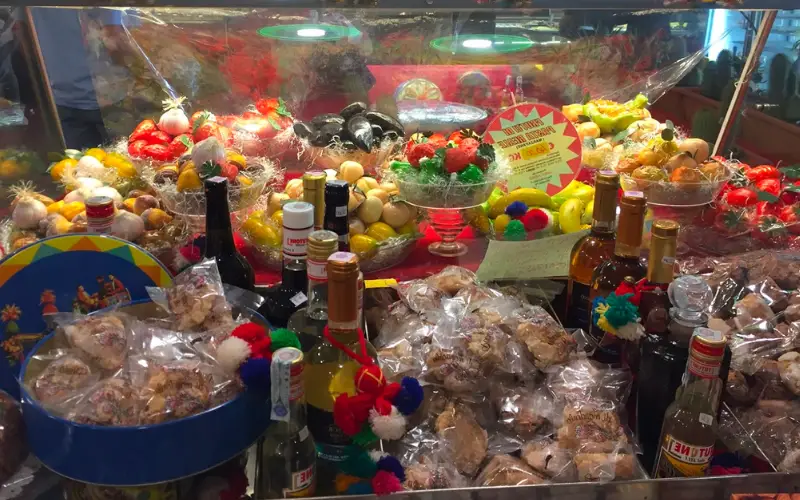
Tutti i Morti, or “All the Dead,” is celebrated in Italy on November 2nd as a day to remember and honor deceased loved ones. People often visit cemeteries to clean and decorate the graves of their relatives with candles and flowers. It’s a time for quiet reflection, and many families light candles in memory of the departed. In some regions, special foods and pastries like “fave dei morti” (beans of the dead) are prepared and shared. This day emphasizes the importance of respecting and cherishing the memories of those who have passed away, uniting families in their remembrance.
Read More Fun Facts
Learn more fun facts with Trivia Mastermind content.
11. Fet Gede
Haiti
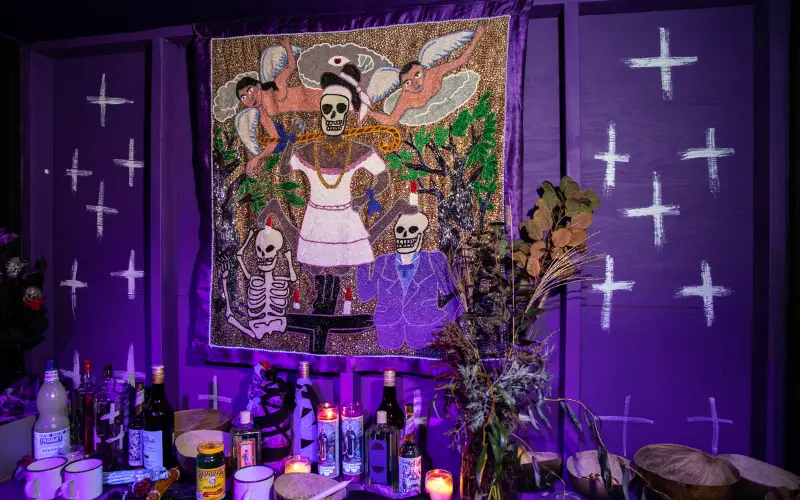
Fet Gede, known as the Festival of the Ancestors or Day of the Dead in Haiti, is a vibrant and deeply spiritual celebration held on November 1st and 2nd, dedicated to honoring deceased ancestors. Customs include visiting cemeteries to clean and decorate graves, music and dance featuring trance-like ceremonies, strong ties to Haitian Vodou with rituals led by priests and priestesses, food offerings of the deceased’s favorites, symbolic costumes, and unique cross-dressing traditions. It’s a rich and artistically expressive event that embodies the enduring connection between the living and the deceased in Haitian culture, fostering remembrance, reflection, and reverence for the spirits of the ancestors.
12. Day of Dracula
Romania
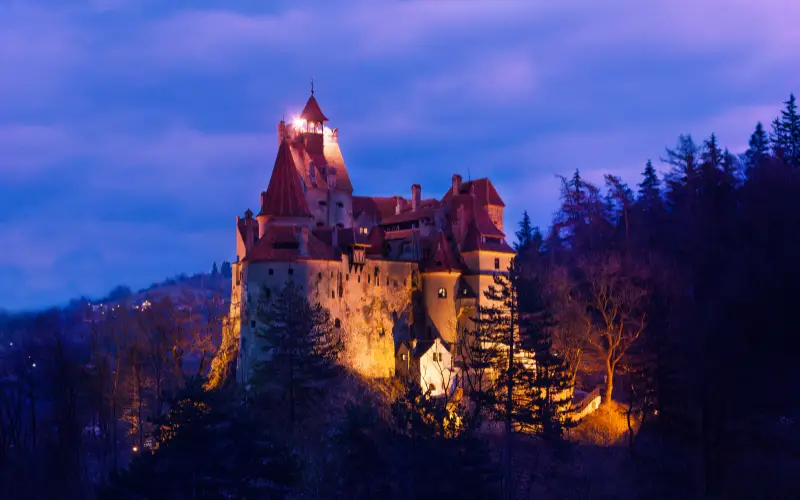
Halloween holds a special significance in locations like the eerie Bran Castle, nestled near Brasov in the heart of Transylvania, Romania. Bran Castle is often linked to the 15th-century ruler, Prince Vlad Tepes, who served as the inspiration for Bram Stoker’s legendary character, Count Dracula. In Romania, there are numerous guides and comprehensive travel packages that provide Halloween tours and festivities at Count Dracula’s castle. Romanians wholeheartedly embrace the spirit of Halloween, eagerly donning elaborate costumes, engaging in an array of spine-chilling games, and transforming into vampires, specters, and playful monsters with vibrant face paint. When it comes to Halloween traditions, food, and gifts, Romanians are passionate celebrants, marking the occasion with grandiose parties and delighting in ghoulish revelry.
13. Pitru Paksha
India
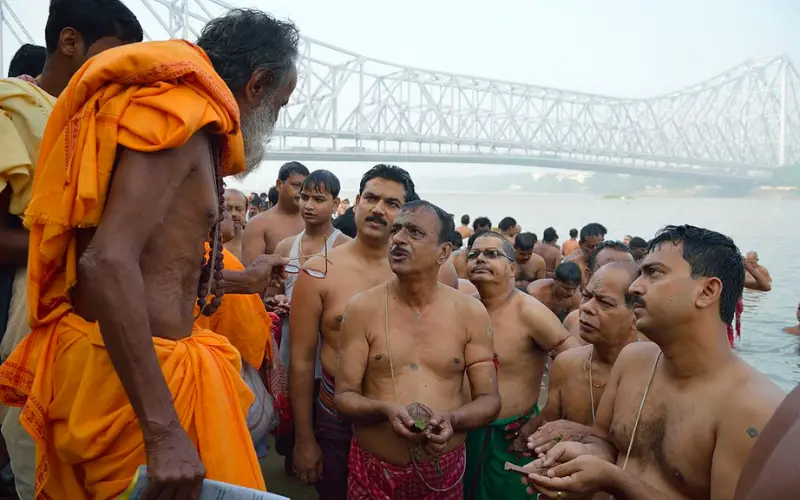
Pitru Paksha, also known as Shraadh, is a 16-day solemn and religious observance in India dedicated to paying homage to deceased ancestors. Key customs during this period include the preparation and offering of vegetarian dishes to Brahmins and priests, the “tarpan” ritual at water bodies with offerings of water, sesame seeds, and rice to ancestors, acts of charity towards the needy, the avoidance of new ventures, conducting “Shradh Puja” ceremonies with prayers and rituals, and a focus on self-reflection, repentance, and forgiveness. This observance provides a significant time for Indians to express reverence for their forebears, seek blessings and forgiveness for their ancestors’ souls, and engage in traditions deeply rooted in Hindu culture.
14. La Festa di Ognissanti
Italy
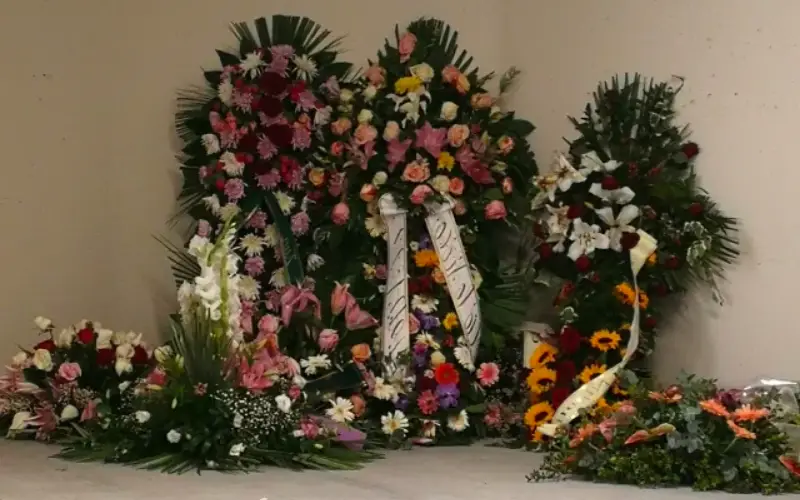
La Festa di Ognissanti, or All Saints’ Day in Italy, celebrated on November 1st, is dedicated to honoring all saints, known and unknown, and features key traditions. Families visit cemeteries, adorning graves with candles, chrysanthemums, and wreaths. Prayers are offered for departed souls, both saints and family members, and in some regions, a “silent dinner” is observed with a place set for the deceased. Special church services and liturgical activities commemorate the Feast of All Saints, highlighting the significance of faith and family. The practice of visiting cemeteries and creating a serene ambiance with flowers and candles is a central element of this solemn observance.
Conclusion
The world is full of captivating celebrations that resonate with the spirit of Halloween, whether through honoring the departed, confronting malevolent spirits, or simply embracing the joy of dressing up in elaborate costumes. As we’ve traversed the globe, we’ve encountered diverse cultures with a common thread of celebrating the eerie, the mysterious, and the magical. These 14 Halloween-like traditions from around the world remind us that no matter where we’re from, there’s something enchanting about the thrill of celebrating the otherworldly. It’s a testament to the universality of our fascination with the supernatural, the macabre, and the fantastical.
Read More Fun Facts
Learn more fun facts with Trivia Mastermind content.
Play Trivia!
Challenge yourself and play trivia questions with answers and explanations.
Recent Posts
Science Trivia - Astronomy ...
Step into a realm of nostalgia as we embark on a journey through the annals of pop culture and bid farewell to 35 recently obsolete technologies. In the ever-evolving landscape of innovation, certain...


